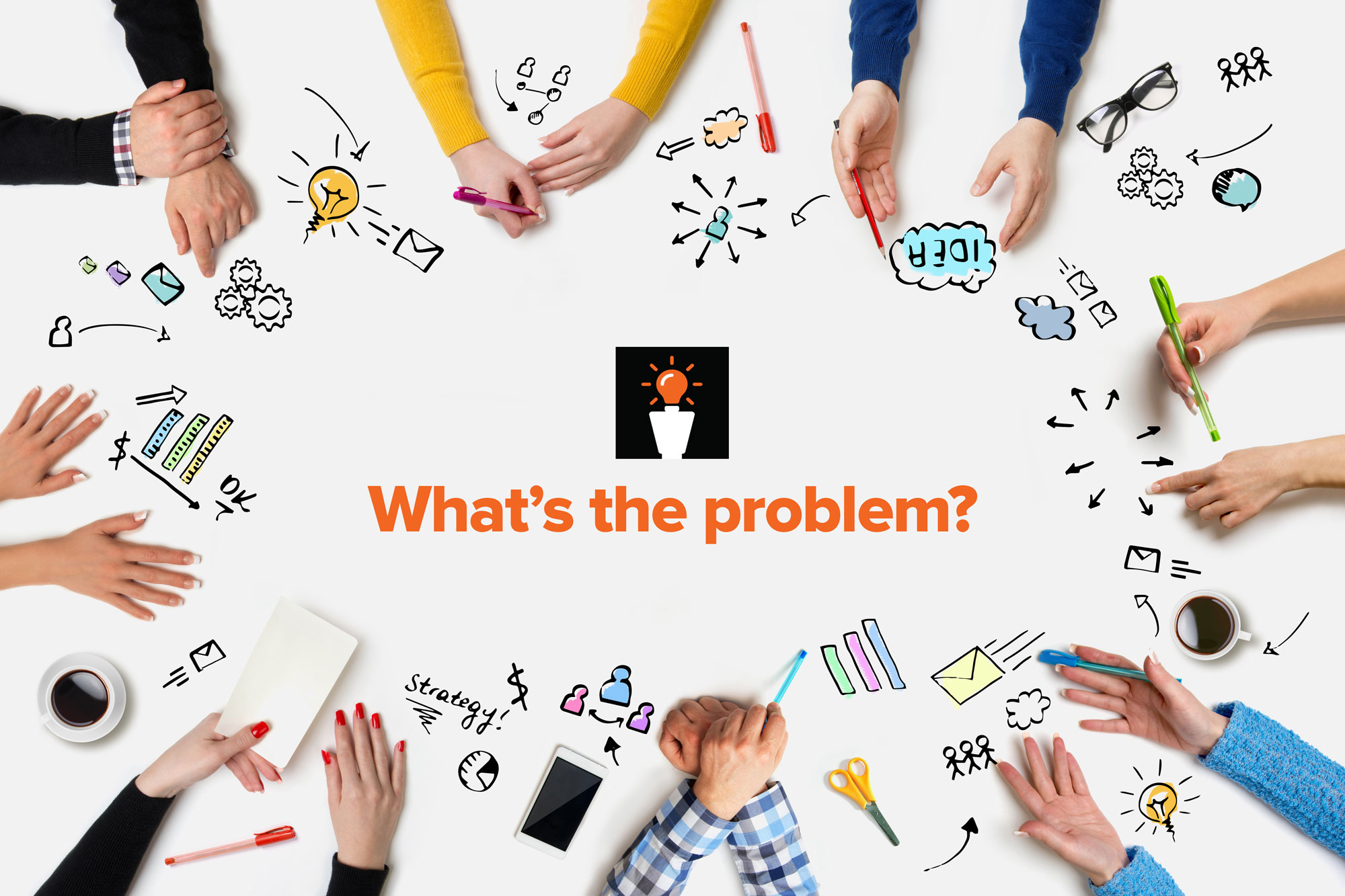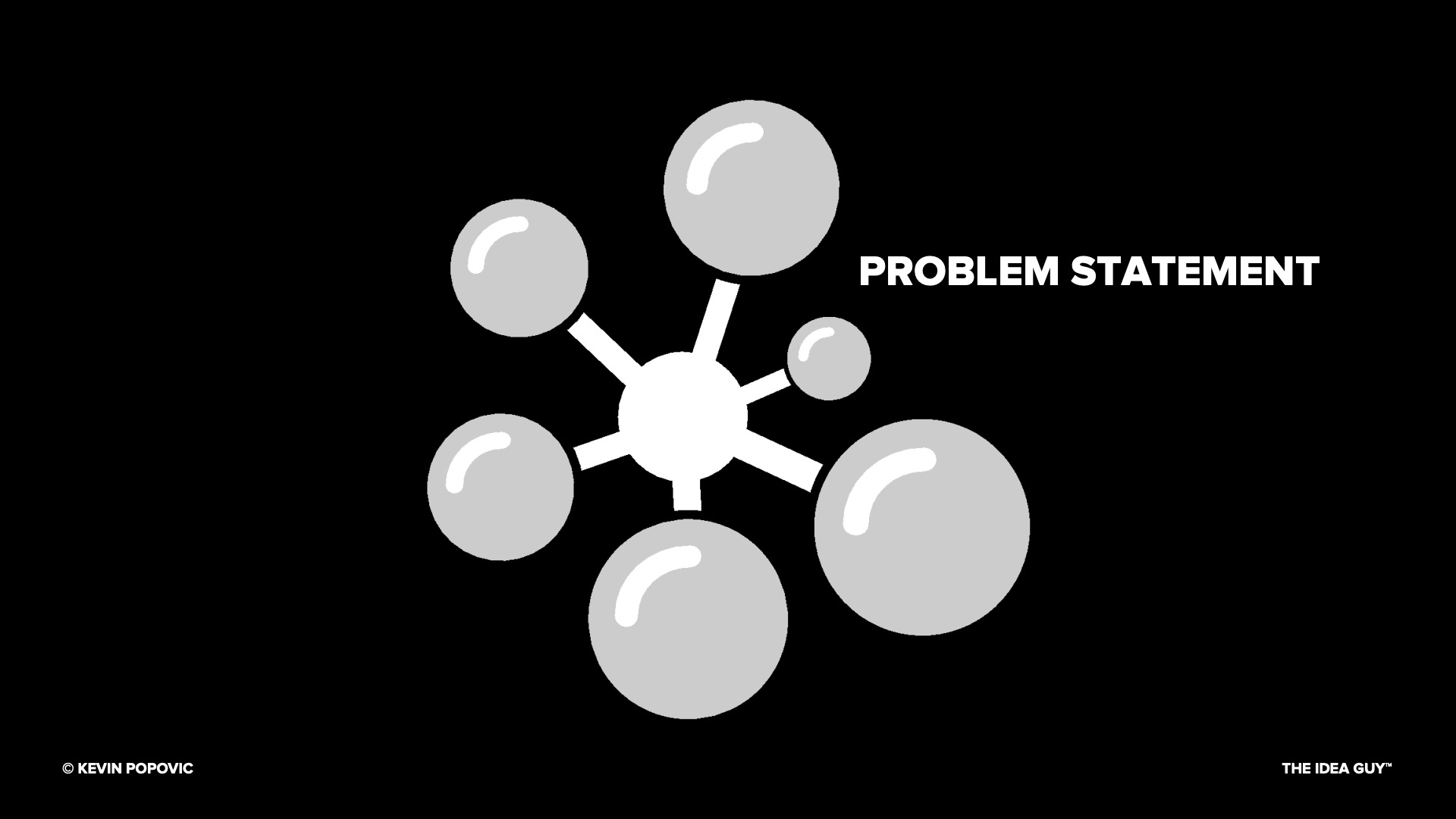Problem Statement: Verbalizing the Challenge
The Idea Guy • January 19, 2019
About Problem Statements
A problem statement is a concise description of an issue to be addressed or a condition to be improved upon. It identifies the gap between the current (problem) state and desired (goal) state of a process or product. Focusing on the facts, the problem statement should be designed to address the 5 Whys. The first condition of solving a problem is understanding the problem, which can be done by way of a problem statement.
Definition:A clear concise description of the issue(s) that need(s) to be addressed by a problem solving team.
Definition:A clear concise description of the issue(s) that need(s) to be addressed by a problem solving team.
Meaning of Color
In color psychology white is the color of new beginnings, of wiping the slate clean, so to speak. It is the blank canvas waiting to be written upon. While white isn’t stimulating to the senses, it opens the way for the creation of anything the mind can conceive. White can represent a successful beginning and is why it is used to represent the beginning our our process.
White contains an equal balance of all the colors of the spectrum, representing both the positive and negative aspects of all colors (in our process). Its basic feature is equality, implying fairness and impartiality, neutrality and independence.
Like the Problem Statement, white is totally reflective, awakening openness, growth and creativity. You can’t hide behind it as it amplifies everything in its way.
- Learn more: http://www.color-wheel-pro.com/color-meaning.html
- Learn more: https://www.empower-yourself-with-color-psychology.com/color-white.html
Video: Problem Framing and Problem Solving
Theory: Why Verbalize Our Problem?
The main purpose of the problem statement is to identify and explain the problem. This includes describing the existing environment, where the problem occurs, and what impacts it has on users, finances, and ancillary activities.[3] Additionally, the problem statement is used to explain what the expected environment looks like. Defining the desired condition provides an overall vision for the process or product. It makes clear the purpose for initiating the improvement project and the goals that it is meant to accomplish.
Another important function of the problem statement is to be used as a communication device. It helps with obtaining buy-in from those involved in the project. Before the project begins, the stakeholders verify the problem and goals are accurately described in the problem statement. Once this approval is received, the project team reviews it to ensure everyone understands the issue at hand and what they are trying to accomplish. This also helps define the project scope, which keeps the project concentrated on the overall goal.
The problem statement is referenced throughout the project to establish focus within the project team and verify they stay on track. At the end of the project, it is revisited to confirm the implemented solution indeed solves the problem. A well-defined problem statement can also aid in performing root-cause analysis to understand why the problem occurred and ensure measures can be taken to prevent it from happening in the future.
It is important to note that the problem statement does not define the solution or methods of reaching the solution. The problem statement simply recognizes the gap between the problem and goal states. It can be said that, “a problem well stated is half solved.”[4] However, there are often multiple, viable solutions to a problem. Only after the problem statement is written and agreed upon should the solution(s) be discussed and the resulting course of action determined.

Defining the Problem Statement
Before the problem statement can be crafted, the problem must be defined. It is human nature to want to begin working on a solution as soon as possible and neglecting the definition of the true problem to be solved. However, a poorly defined problem increases the risk of implementing a solution that does not fully meet the expected results. A problem cannot be solved if it is not completely understood.
The process of defining the problem is often a group effort. It starts with meeting with the stakeholders, customers, and/or users affected by the issue (if possible) and learning about their pain points. Since people often struggle with effectively communicating their issues, particularly to someone outside of the process, it is helpful to ask a series of “why” questions until the underlying reasoning is identified. This method, known as the “5 Why’s”, helps drill down to the core problem as many of the experienced frustrations could be mere symptoms of the actual problem. Asking these additional questions as well as paraphrasing what the stakeholder had said demonstrates a degree of empathy and understanding of the problem.
The information collected from these initial interviews is only one part of problem analysis. Many times the problem extends to multiple areas or functions to which the stakeholders, customers, and users are unaware. They may also be familiar with what is happening on the surface but not necessarily the underlying cause. Therefore, it is just as essential to gather knowledge, information, and insights from project team members and subject matter experts concerning the problem.[8] Additional research materials, including work instructions, user manuals, product specifications, workflow charts, and previous project plans may also need to be consulted. Like most other stages in the process improvement project, defining the problem is often iterative as several rounds of discussions may be needed to get the full picture.
Once the problem is understood and the circumstances driving the project initiation are clear, it is time to write the problem statement.
Example Problem Statement
Problem statements can vary in length, depending on the complexity of the problem. The following is an example of a simple problem statement for the creation of a Single Sign On capability:
IDEAL
Ideally our users would be able sign into their laptops and then automatically have access to all of the applications they need to use.
REALITY
In reality we use at least three applications every day to accomplish our work. Each application is protected by a password with different requirements for username & password length. Passwords also expire at different times.
CONSEQUENCES
Users waste approximately 2 minutes per day logging into multiple applications (500 users * 2 minutes per day = 1000 minutes in lost productivity; 1000 minutes = 16.67 hrs per day * $75/hr = $1250 per day).
Helpdesk resolves approximately 6000 calls per year to reset forgotten passwords & unlock accounts.
Security risk as users will continue to write usernames & passwords on sticky notes at their desks.
PROPOSAL
Have S/W Dev, Network Administration and business stakeholders collaborate to evaluate potential solutions for a Single Sign On capability.
When these parts have been identified, we can work to consolidate into a more concise statement starting with “How might we…”
“How might our users sign into their laptops to access applications in order to reduce costs while maintaining productivity and security.”
As retrieved Jan 19, 2019: https://en.wikipedia.org/wiki/Problem_statement#cite_note-:1-2








